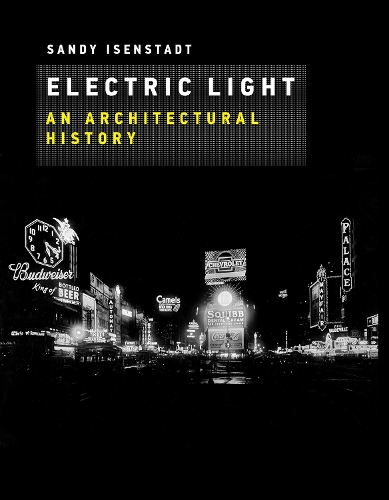
Electric Light: An Architectural History
(Hardback)
Publishing Details
Electric Light: An Architectural History
By (Author) Sandy Isenstadt
MIT Press Ltd
MIT Press
25th September 2018
United States
Classifications
Tertiary Education
Non Fiction
Architecture: interior design
Heating, lighting, ventilation
729.2809
Physical Properties
Hardback
304
Width 178mm, Height 229mm, Spine 22mm
Description
How electric light created new spaces that transformed the built environment and the perception of modern architecture.In this book, Sandy Isenstadt examines electric light as a form of architecture-as a new, uniquely modern kind of building material. Electric light was more than just a novel way of brightening a room or illuminating a streetscape; it brought with it new ways of perceiving and experiencing space itself. If modernity can be characterized by rapid, incessant change, and modernism as the creative response to such change, Isenstadt argues, then electricity-instantaneous, malleable, ubiquitous, evanescent-is modernity's medium. Isenstadt shows how the introduction of electric lighting at the end of the nineteenth century created new architectural spaces that altered and sometimes eclipsed previously existing spaces. He constructs an architectural history of these new spaces through five examples, ranging from the tangible miracle of the light switch to the immaterial and borderless gloom of the wartime blackout. He describes what it means when an ordinary person can play God by flipping a switch; when the roving cone of automobile headlights places driver and passenger at the vertex of a luminous cavity; when lighting in factories is seen to enhance productivity; when Times Square became an emblem of illuminated commercial speech; and when the absence of electric light in a blackout produced a new type of space. In this book, the first sustained examination of the spatial effects of electric lighting, Isenstadt reconceives modernism in architecture to account for the new perceptual conditions and visual habits that followed widespread electrification.
Reviews
In varying the scope of his reflectionsfrom the detail of the light switch to the suspended temporality of a city's electrified streetsIsenstadt engages readers on a compelling journey at the intersection of society, culture, and technology. Rather than deploying aesthetic categories, Isenstadt focuses on new visual habits
The Architect's NewspaperIsenstadt's book explores an understudied field, making valuable contributions and connections between studies of science, technology, and society (STS) as well as art and architectural history. The book is also written in a sophisticated yet accessible manner for readers who simply want to expand their horizon.
The Journal of Architectural EducationIsenstadt has created a work that is every bit as bright and kaleidoscopic as the Great White Way he describes with such relish. His prose is always provocative and punchy, whether he is describing the invention of the light switch or evoking Martin Heidegger, James Joyce, and Marcel Proust.
Journal of the Society of Architectural HistoriansAuthor Bio
Sandy Isenstadt is a Professor in the Art History Department and Director of the Center for Material Culture Studies at the University of Delaware. He is the author of The Modern American House: Spaciousness and Middle-Class Identity.
